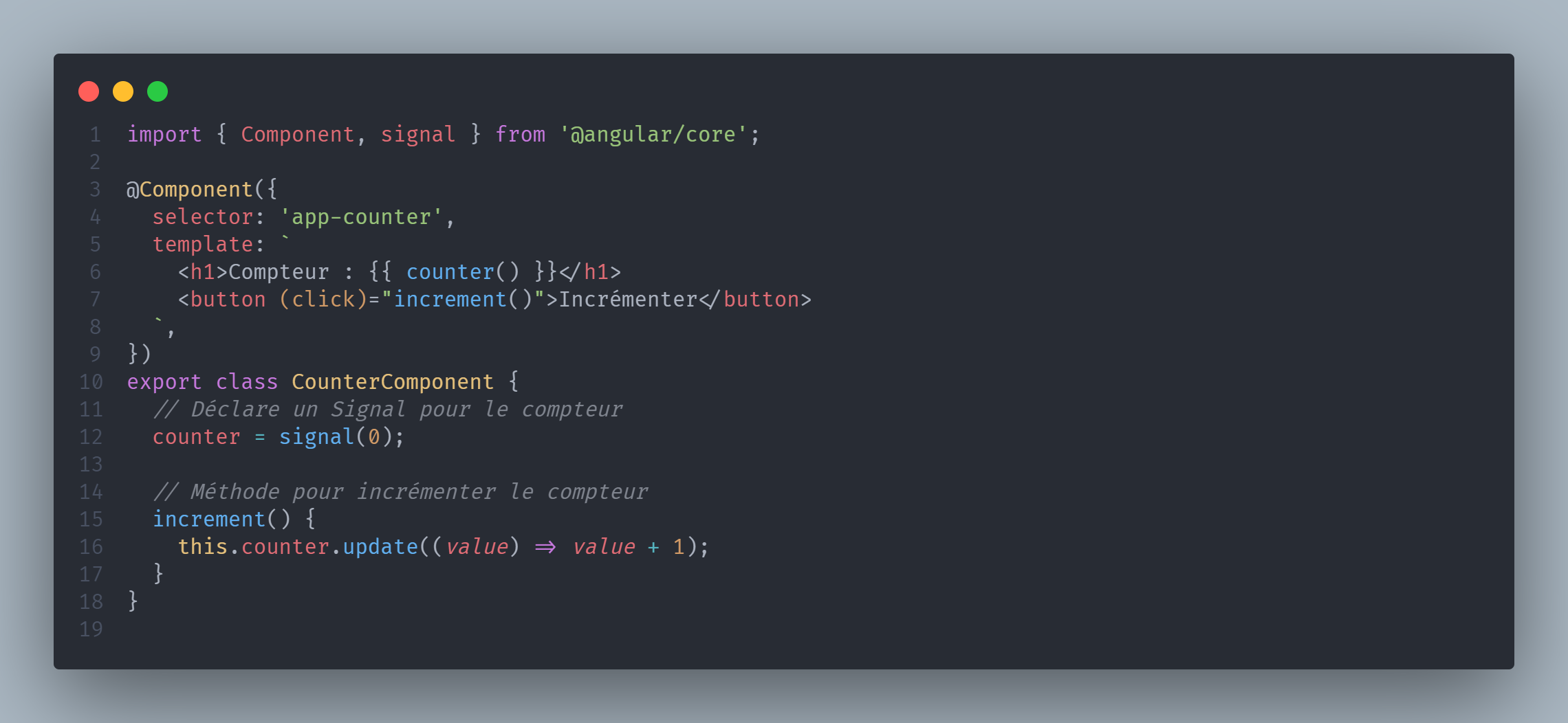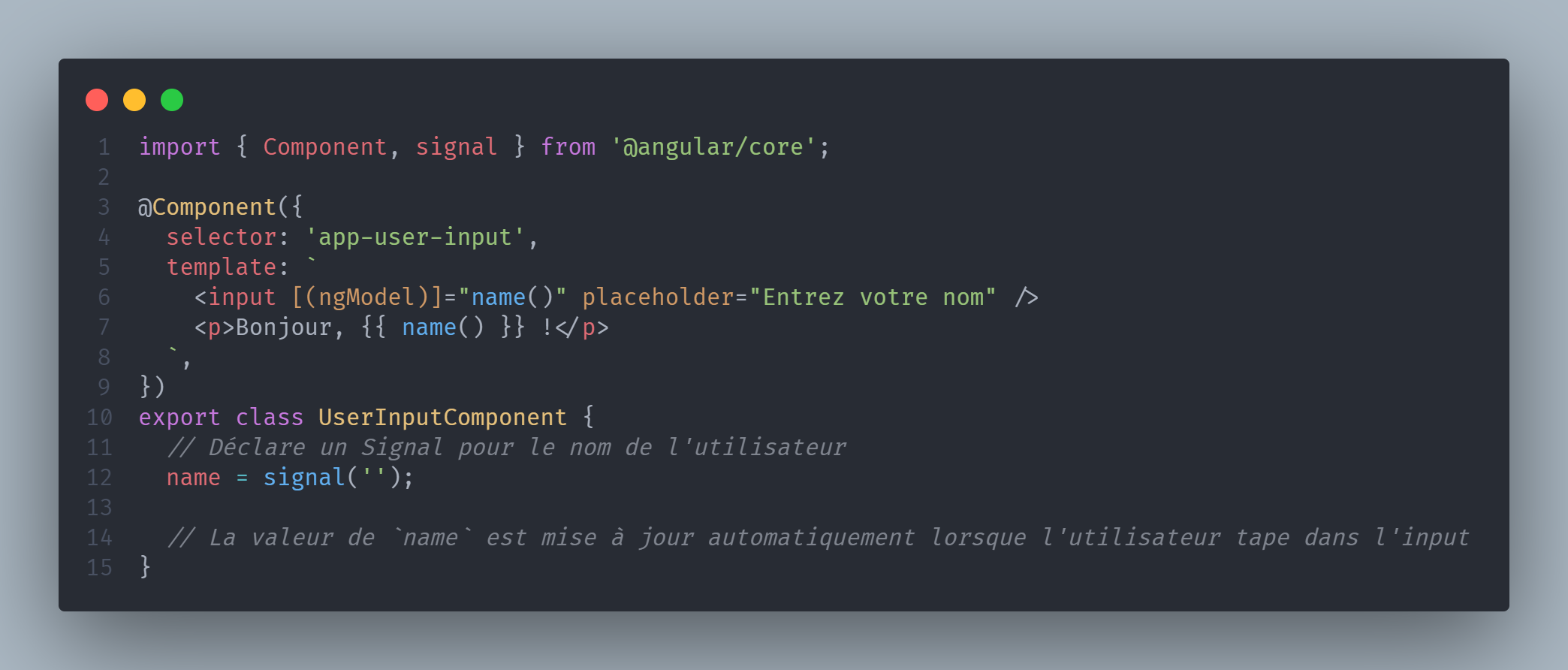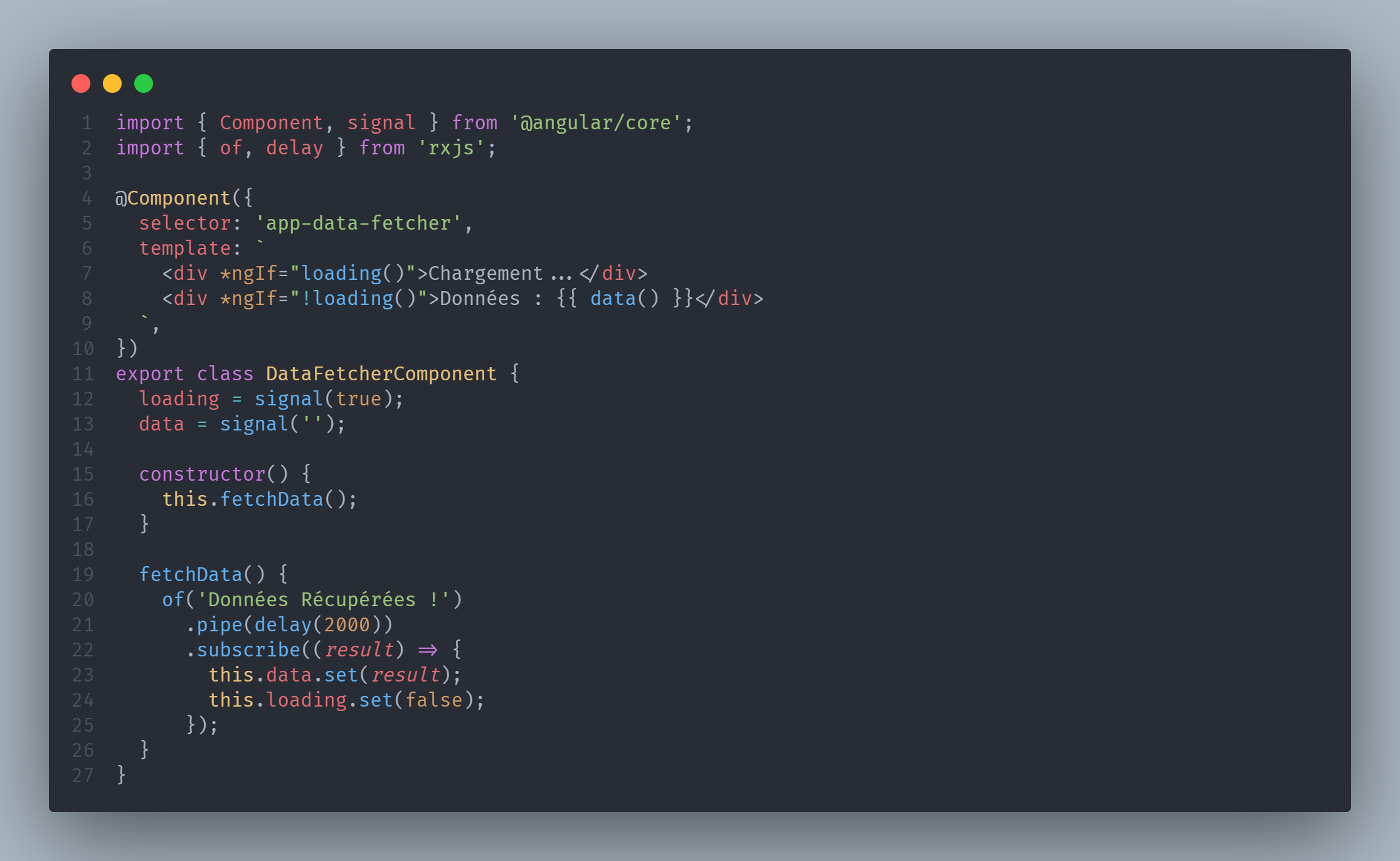
Angular Signals: A Game-Changer for Reactive Programming
Understanding Angular Signals
Angular Signals, introduced in Angular 16, represent a paradigm shift in the framework's reactive programming model. They offer a clearer and more intuitive way to manage state and trigger updates in your components. In this blog post, we will examine the fundamental concepts of Angular Signals, explore their benefits, use cases, and how they compare to traditional reactive approaches. For more detailed information, you can refer to the official Angular Signals documentation.
What are Angular Signals?
Angular Signals are essentially reactive variables that automatically update components when their values change. Unlike traditional approaches, Signals do not require explicit subscriptions or change detection cycles. This leads to a more declarative and performant way to build reactive applications.
Basic Example of Signals
To illustrate how Signals work, let's create a simple counter component using Angular Signals.
 In this example:
In this example:
- We create a Signal `counter` initialized to `0`.
- The `increment` method uses the `update` function to modify the value of the Signal. This method takes a callback function that receives the current value and returns the new value, thus ensuring a clean and safe update process.
Key Benefits of Angular Signals
1. Simplified State Management
Signals provide a simple mechanism for managing component state. You can declare Signals directly in your components, making your code more concise and easier to understand.
2. Automatic Change Detection
When the value of a Signal changes, Angular automatically updates the components that depend on it. This eliminates the need for manual change detection, thus improving performance and reducing repetitive code.
3. Improved Readability
Signals promote a more declarative programming style, making your code more readable and maintainable. The explicit relationship between Signals and the components that depend on them is clear and easy to follow.
4. Enhanced Performance
Angular's optimized change detection mechanism ensures that only the necessary parts of your application are re-rendered when a Signal changes. This can lead to significant performance improvements, especially in large-scale applications.
How Angular Signals Work
Angular Signals leverage a mechanism called **effect tracking** to determine which components need to be updated when the value of a Signal changes.
Key Methods
set(value): Directly sets the value of a Signal. This method automatically triggers UI updates and any dependencies.

update(updater): Accepts a function that receives the current value and returns the new value. This method is particularly useful for incrementing or modifying the current value without needing to read it beforehand.

The Role of `zone.js`
Angular applications heavily rely on `zone.js` to manage change detection and update the UI when component states change. With the introduction of Signals, the reliance on `zone.js` may be reduced in some scenarios. Since Signals automatically notify Angular of changes, this minimizes manual triggers for change detection.
Example of Effect Tracking
Consider the following example where we use Signals to manage user input:

In this case, when the user types in the input box, the Signal `name` automatically updates, and the greeting message re-renders without manual change detection.
Use Cases for Angular Signals
1. Component State: Store and manage component-specific data using Signals.
2. Data Binding: Bind Signals to template expressions to dynamically update the UI.
3. Asynchronous Operations: Use Signals to manage the state of asynchronous operations, such as API calls or timers.
Example: Managing Asynchronous State with Signals

In this example:
- The component displays a loading message while data is being fetched.
- Once the data is retrieved, the Signals automatically update the UI.
4. Custom Hooks: Create reusable custom hooks that encapsulate common reactive patterns using Signals.
Comparing Angular Signals to Traditional Approaches
While Angular Signals offer many advantages, it's important to understand how they compare to traditional reactive approaches like RxJS.
1. Simplicity
Signals provide a simpler and more intuitive way to manage state compared to RxJS observables. There is no need to manage subscriptions or deal with complex state transformations.
2. Performance
Angular's optimized change detection mechanism can often lead to better performance than manual subscription management in RxJS, especially in large applications where change detection can become a bottleneck.
3. Scope
Signals are typically limited to a specific component, whereas RxJS observables can be shared across multiple components, making Signals ideal for managing local state.
Conclusion
Angular Signals represent a significant advancement in the reactive programming capabilities of the framework. By providing a cleaner, more efficient, and more declarative way to manage state and trigger updates, Signals simplify Angular application development. By exploring and adopting Angular Signals, you will discover the benefits they bring to your projects and how they can help you write more maintainable and performant code. For more details, check the official Angular Signals documentation.
